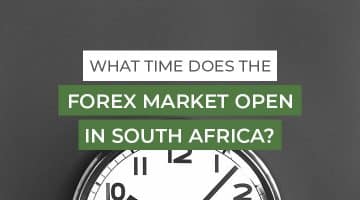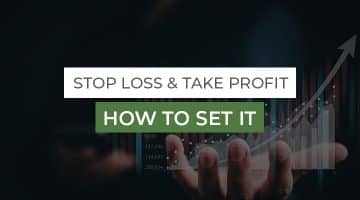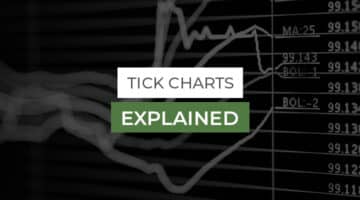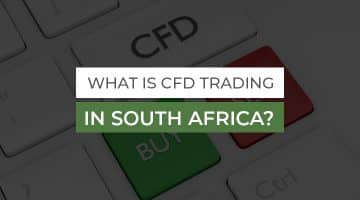Day Trading and Swing Trading the Currency Market

In this article
When it comes to currency trading, the timing of trades can have a huge effect on strategy and profitability. Day traders open and close several positions in a single day. On the other hand, Swing traders engage in trades that last many days, weeks, or even months.
These two trading types accommodate different traders depending on the amount of capital available, time availability, and trading psychology.
In this guide, we’ll explain how day trading and swing trading work and how you can develop trading strategies using them. In the last part of the post, we’ll discuss how to decide between the two.
1. Understanding day trading
Day trading is a traditional trading technique in which you buy and sell a forex pair over a single trading day to benefit from small price movements.
Day trading is another form of short-term trading, but unlike scalping, you usually only take one trade a day and close it out at the end of the day.
Day traders enjoy taking aside at the start of the day, working on their bias, and then finishing the day with a profit or a loss.
Day trading is suitable for traders that have enough time throughout the day to analyze, execute and monitor a trade.
How does day trading work?
Day trading takes a lot of time. It necessitates tight, active trading on short timeframes such as 15 minutes, 5 minutes, or even 1 minute. It can also become very stressful, difficult, and demanding (and possibly rewarding).
And traders must maintain some level of emphasis throughout the trading session. Moreover, day traders can choose from a wide range of trading strategies.
What all day traders have in common is a desire for a number of reasonably small winning trades, with returns ranging from a few pips to a 1.5 percent price movement as a best-case winning trade scenario.
2. Understanding swing trading
Swing trading is a medium-term trading strategy used by forex traders to benefit from price fluctuations.
It is a trading style that necessitates patience in order to hold trades for several days at a time. Swing trading is a trading style that exists between two other common trading styles: day trading and position trading.
Swing traders detect potential trends and then keep the trade for an extended period of time, ranging from two days to several weeks.
It is perfect for those who are unable to monitor their charts during the day but can devote a couple of hours to market analysis.
Swing trading is suitable for those who have full-time jobs or in their school but have enough free time to stay up-to-date with the overall economic picture.
How does swing trading work?
Swing trading seeks to detect “swings” within a medium-term trend and enters only when there appears to be a high likelihood of success.
For example, in an uptrend, you want to buy (go long) at the “swing lows.” You sell (go short) at “swing highs” to profit on temporary countertrends in the other direction.
Swing trading is usually less time-consuming and performed on longer timeframes than day trading.
The most common time frame is 4 hours, but some swing traders can make decisions based on 1-hour charts or use lower timeframes to fine-tune entry and exit points.
One of the most appealing aspects of swing trading is that traders can practice it by monitoring prices every four hours – something that many full-time workers can incorporate into their work and leisure time.
In addition, swing trading needs much less time and effort than day trading.
Swing traders target greater returns from market fluctuations of 1.5 percent to 5%, with larger stops to account for the uncertainty in 4-hour or hourly price movements.
Swing trading or day trading: which one to choose?
To generate consistent income in the currency market, day trading and swing trading require a significant amount of work and experience.
Finding a strategy that generates an edge, or a benefit, over a large number of trades and then implementing the strategy over and over again is the key to successful trading.
Consistent outcomes can only be obtained by testing a strategy in a variety of market conditions. That takes time, and it should include hundreds of trades in a demo account before risking real money.
Also, choosing between day trading and swing trading is often influenced by the trader’s personality and preferences.
Here’s what you need to consider when deciding:
- Stress: Day trading is usually more stressful than swing trading.
- Speed: The pace of day trading can be very quick. Swing trading allows for trades to last for days or weeks.
- Concentration: Due to the fast pace and limited windows of opportunity, day trading requires continuous focus for extended periods of time. Swing trading still entails concentration, but the time between activities, such as entering or exiting trades, is much longer.
- Freedom: One might claim that swing traders have more freedom than day traders because swing trading takes up less time.
Each strategy has advantages and disadvantages and specific rules that you must adhere to avoid mistakes. However, several traders apply these contradictory tactics at random, without knowing how they can jeopardize profitability. You need to determine whether you are a day trader or a swing trader in order to fine-tune your approach.
Key takeaways
Day Trading
- Multiple trades on each trading day
- Positions last from hours to days
- Full-time work
- Uses short-term buy and sell signals
- Multiple smaller profits or losses
Swing Trading
- Multiple trades every week
- Positions last from days to weeks
- Part-time
- Less, yet larger gains or losses
- Uses long-term buy and sell signals
Bottom line
One trading style is not superior to another; they simply cater to different needs. On smaller-sized trading accounts, day trading has a higher profit opportunity, at least in percentage terms.
Up to a certain point, swing traders have a greater chance of maintaining their percentage returns even as their account grows.
Jason Morgan is an experienced forex analyst and writer with a deep understanding of the financial markets. With over 13+ years of industry experience, he has honed his skills in analyzing and forecasting currency movements, providing valuable insights to traders and investors.
Forex Content Writer | Market Analyst
Relevant Posts

Forex Trading App – Trading Simplicity?
[top_three_brokers] If you are an active forex trader, you love to have access to market…
Read more

What Time Does the Forex Market Open in South Africa?
[top_three_brokers] There are four major Forex centres worldwide: New York, London, Tokyo, and Sydney. Because…
Read more

Why You Should Trade on a Forex Demo Account?
[top_three_brokers] Unless you have a crystal ball, which can predict what will happen in the…
Read more

Stop Loss and Take Profit – How Do You Set It?
[top_three_brokers] As a trader, the most important role is to manage and protect your trading…
Read more

Tick Chart Explained
[top_three_brokers] As a trader, you use a wide variety of charts to analyse markets. If…
Read more

What is Forex?
[top_three_brokers] You've probably heard the term forex but have no clue what it's all about.…
Read more
What is KYC when opening a Forex Trading Account?
Know Your Customer/Client (KYC) is a term used in financial services and trading platforms to…
Read more

How to design a Forex Trading System?
[top_three_brokers] After becoming familiar with the forex market, a thought that probably pops in your…
Read more

What is CFD Trading in South Africa?
[top_three_brokers] There's been an immense increase in the popularity of CFD trading in South Africa. With…
Read more

How to Trade Forex for Beginners?
[top_three_brokers] If you are not familiar with forex trading and want an opportunity to make…
Read more

Forex Trading App – Trading Simplicity?
[top_three_brokers] If you are an active forex trader, you love to have access to market…

What Time Does the Forex Market Open in South Africa?
[top_three_brokers] There are four major Forex centres worldwide: New York, London, Tokyo, and Sydney. Because…

Why You Should Trade on a Forex Demo Account?
[top_three_brokers] Unless you have a crystal ball, which can predict what will happen in the…

Stop Loss and Take Profit – How Do You Set It?
[top_three_brokers] As a trader, the most important role is to manage and protect your trading…

Tick Chart Explained
[top_three_brokers] As a trader, you use a wide variety of charts to analyse markets. If…

What is Forex?
[top_three_brokers] You've probably heard the term forex but have no clue what it's all about.…
What is KYC when opening a Forex Trading Account?
Know Your Customer/Client (KYC) is a term used in financial services and trading platforms to…

How to design a Forex Trading System?
[top_three_brokers] After becoming familiar with the forex market, a thought that probably pops in your…

What is CFD Trading in South Africa?
[top_three_brokers] There's been an immense increase in the popularity of CFD trading in South Africa. With…

How to Trade Forex for Beginners?
[top_three_brokers] If you are not familiar with forex trading and want an opportunity to make…


